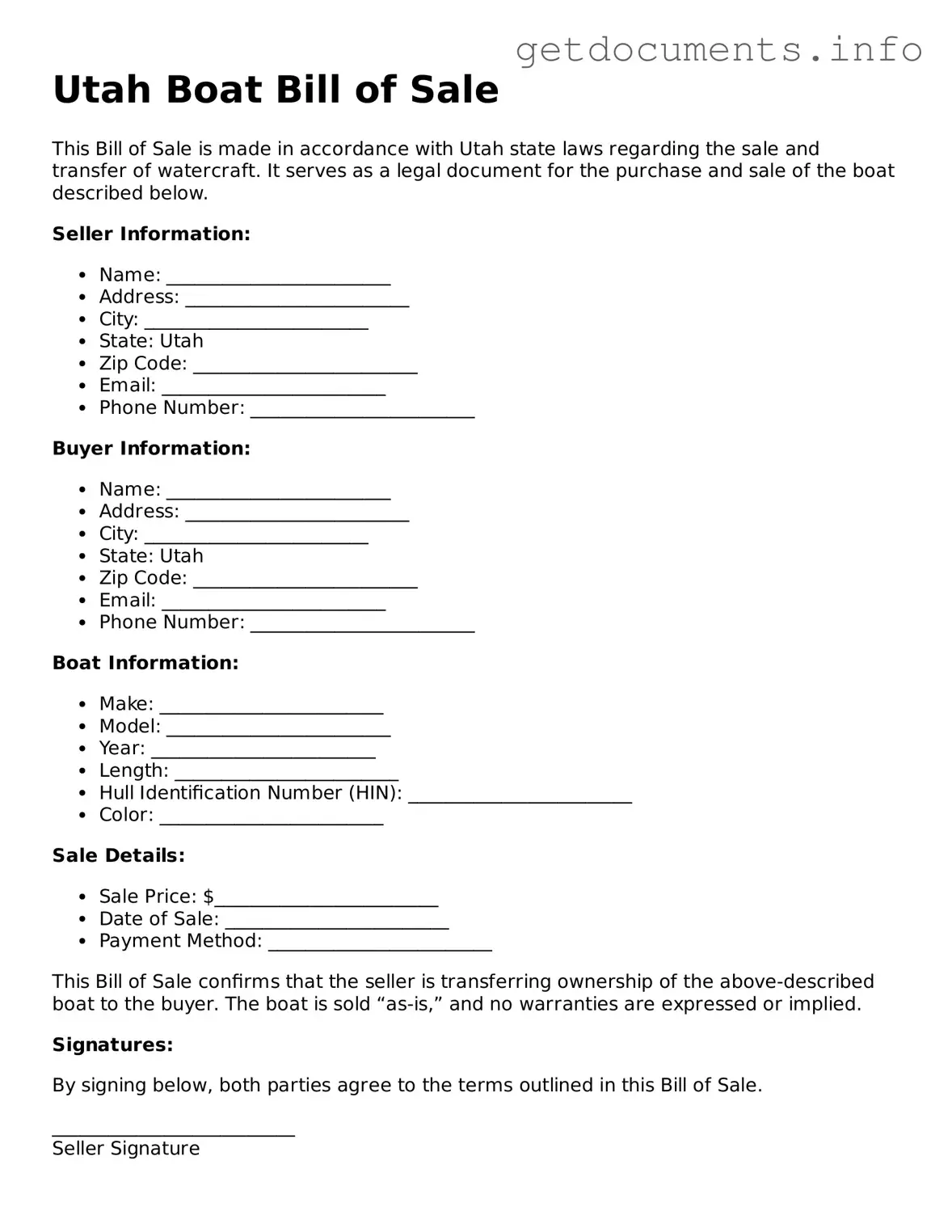Free Boat Bill of Sale Template for Utah
The Utah Boat Bill of Sale is a legal document that records the transfer of ownership of a boat from one party to another. This form serves as proof of the sale and includes essential details such as the buyer's and seller's information, the boat's description, and the sale price. Completing this form is crucial for ensuring a smooth transition of ownership and for future registration purposes.
To get started, fill out the form by clicking the button below.
Access Boat Bill of Sale Editor
